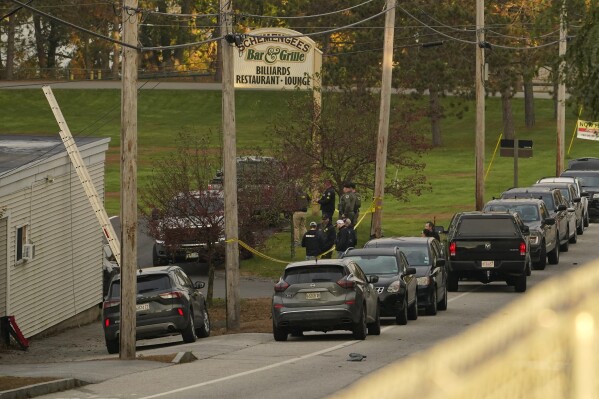ST. LOUIS (AP) — Many states have laws designed to keep children away from convicted sexual offenders on Halloween night, such as curfews for those on offender registries and requirements to keep their porch lights off.
But a Missouri law mandating a yard sign was a step too far, a judge ruled.
A 2008 law required registered offenders in Missouri to post signs on Oct. 31 that read “No candy or treats at this residence.” U.S. District Judge John Ross ruled this month that the provision violated the First Amendment by forcing “compelled speech,” depriving those on the registry “of their freedom to speak in their own words or to not speak at all.”
The ruling lets stand other provisions of the Missouri law that require people on the registry on Halloween to remain inside their home from 5 p.m. to 10:30 p.m. and to leave their outdoor lights off.
The Missouri sign law is unique among states, but some cities and counties have tried similar laws that were either struck down in court or withdrawn as part of lawsuit settlements.
Ross’ ruling about the Missouri sign law drew a mixed response. Some said extraordinary steps are necessary on a night when children flood the streets and often knock on the doors of strangers. Others said the sign law was unnecessarily cruel — and even counterproductive.
“I feel like it’s a setback and another example of predators’ rights kind of trumping those of their victims,” said Tara Bishop, a 40-year-old mother of four from southwestern Missouri who operates a Facebook page called Child Predators Exposed with more than 10,000 followers.
Janice Bellucci, the lawyer for the Missouri man who challenged the law, said that for those forced to place the sign, the damage is long-lasting.
“It’s not just stigmatizing you that one day, it stigmatizes you for the rest of your life, as long as you live there,” said Bellucci, who is part of the California-based Alliance for Constitutional Sex Offense Laws.
The lawsuit was filed on behalf of Thomas L. Sanderson of Hazelwood, Missouri, a St. Louis suburb. He was convicted of second-degree sodomy in 2006 after a 16-year-old family friend accused him of sexually touching her. Sanderson, who has maintained his innocence, was sentenced to two years in prison and required to register as a sexual offender for 25 years.
The Missouri Halloween law was adopted two years later. It is unclear how many of the state’s approximately 26,000 convicted sexual offenders have been charged for violating the statute, or how stringent enforcement has been.
The lawsuit said Sanderson asked police if he was subject to the law because his conviction happened before its passage. He said he was told he was not, so he continued to host Halloween parties complete with animatronic figures, lights, a bonfire, music and candy, the lawsuit said.
But the lawsuit said that on Halloween night 2022, police arrived at Sanderson’s home. No sign was posted, and he was arrested. He pleaded guilty to a misdemeanor for violating the Halloween statute and received probation. He sued last year.
Missouri Attorney General Andrew Bailey’s office, in court filings, wrote that the state is duty-bound to protect children who can’t make adequate decisions on their own. Bailey’s office said an appeal is planned.
“I want Missouri to be the safest state in the nation for children. That includes on Halloween,” Bailey, a Republican, said in a statement.
Alison Feigh, director of Jacob Wetterling Resource Center at Zero Abuse Project, which focuses on helping institutions prevent, recognize and respond to child sexual abuse, said most assaults happen after offenders build relationships with victims and their families. Tactics like signs are not helpful in keeping children safe, she said in an email.
“These public signs may give a false sense of security to families while not actually preventing child abuse,” Feigh said.
Other Halloween sign laws also have faced setbacks.
In Georgia, the Butts County Sheriff’s Office was sued in 2019, with people on registries alleging that authorities trespassed onto their properties to post signs that caused humiliation and anxiety. The signs read: “WARNING! NO TRICK-OR-TREATING AT THIS ADDRESS!! A COMMUNITY SAFETY MESSAGE FROM BUTTS COUNTY SHERIFF GARY LONG.”
A federal appeals court panel in 2022 said the signage violated the First Amendment.
In California, Simi Valley required Halloween signs in the yards of registered sexual offenders until reaching a 2013 settlement in a lawsuit filed by the Alliance for Constitutional Sex Offense Laws on behalf of five offenders.
In January, the alliance filed suit after the sheriff’s office in Marion County, Arkansas, created and posted signs and placed them in the yards of those on the registry. The signs read: “Sorry! No Trick or Treat.” The sheriff’s office later agreed to stop posting or requiring the signs.
Jim Salter is the AP correspondent in St. Louis.Disclaimer: The copyright of this article belongs to the original author. Reposting this article is solely for the purpose of information dissemination and does not constitute any investment advice. If there is any infringement, please contact us immediately. We will make corrections or deletions as necessary. Thank you.



